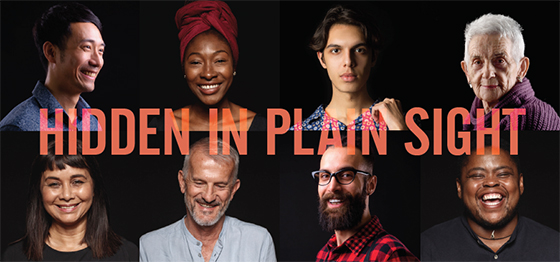
In 2020, more people than ever are living with HIV ‘hidden in plain sight’, and have been here all along since the beginning of the HIV epidemic including ‘emerging’ groups of heterosexual people, women living with HIV, refugees, and men who have sex with men (MSM).
This also includes so-called ‘emerging’ or ‘hard to reach’ groups of people from culturally and linguistically diverse (CALD) backgrounds or from minority ethnic communities, Aboriginal and Torres Strait Islander people, people who are sex workers, people who inject drugs and people born overseas.
These groups are not ‘emerging’ or ‘hard to reach’. They have been here all along.
These terms have the potential to stigmatise, discriminate and create barriers to finding and getting the support they need.
HIV in Hidden in Plain Sight
Today, people living with HIV look like anyone else. We work, get married, have children of our own, are from diverse sexualities, and have a life expectancy of anyone else without HIV.
We are your neighbour, your parent, your brother or sister, your partner or even your priest. We are police officers, CEOs, healthcare professionals, tradespeople, teachers, engineers and entertainers.
Transmission is Hidden in Plain Sight
Some people are hidden in plain sight for many years without knowing they have contracted HIV.
We are not colluders in our ‘mis-diagnosis’ or ‘late presentation’, instead those of us in this situation are often ‘frequent flyers’ with multiple doctor visits often ending up in hospital emergency departments.
It’s time that HIV testing is offered to everyone, free of assumption, including heterosexual people, women, refugees, and men from CALD backgrounds who have sex with men.
Time to ask ‘could it be HIV?’ Knowing means those of us who are living with HIV can get treatment with antiretrovirals, maintain an undetectable viral load to have Zero risk of passing on HIV to our sexual partners.
Stigma & Discrimination is Hidden in Plain Sight
HIV stigma and discrimination exists wherever people living with HIV feel unsafe.
Jokes about AIDS, or comments about ‘being clean’ are signs of HIV stigma and discrimination. Work environments that single out employees living with HIV or social environments which promote ignorant expectations or demands, poses risk to our health and lives.
Whenever these attitudes or practices go unchallenged, they remain hidden in plain sight. Time to shine a light on HIV stigma and discrimination.
The HIV pandemic is not over. There’s still no HIV cure or HIV vaccine. HIV affects anyone who is sexually active. Whether we’re living with HIV or not, we all have a shared responsibility for HIV.
AIDS is Hidden in Plain Sight
Today even though HIV is a treatable health condition rather than a death sentence, around 100 to 150 people still die from an AIDS-defining illness across Australia.
When people living with HIV are undiagnosed and untreated, we usually progress to an AIDS defining illness within 10 years. This also happens for those of us living with HIV who choose not to have treatment. HIV/AIDS is everyone’s business.
To support this messaging, please download the ‘HIV: Hidden in plain sight’ brochure as an A4 page or a flyer.






